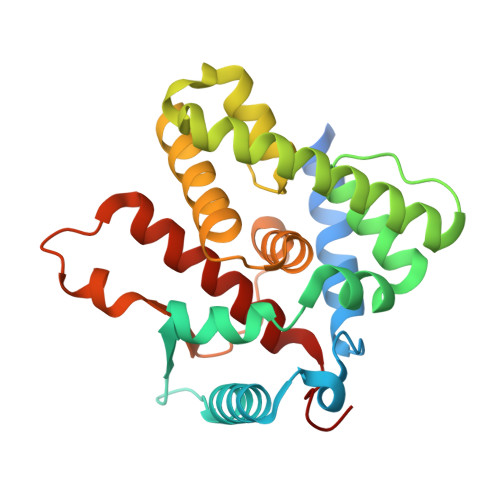Mdm38 is a 14-3-3-Like Receptor and Associates with the Protein Synthesis Machinery at the Inner Mitochondrial Membrane.
Lupo, D., Vollmer, C., Deckers, M., Mick, D.U., Tews, I., Sinning, I., Rehling, P.(2011) Traffic 12: 1457-1466
- PubMed: 21718401
- DOI: https://doi.org/10.1111/j.1600-0854.2011.01239.x
- Primary Citation of Related Structures:
3SKQ - PubMed Abstract:
Mitochondrial ribosomes synthesize core subunits of the inner membrane respiratory chain complexes. In mitochondria, translation is regulated by mRNA-specific activator proteins and occurs on membrane-associated ribosomes. Mdm38/Letm1 is a conserved membrane receptor for mitochondrial ribosomes and specifically involved in respiratory chain biogenesis. In addition, Mdm38 and its higher eukaryotic homolog Letm1, function as K(+)/H(+) or Ca(2+)/H(+) antiporters in the inner membrane. Here, we identify the conserved ribosome-binding domain (RBD) of Mdm38 and determine the crystal structure at 2.1 Å resolution. Surprisingly, Mdm38(RBD) displays a 14-3-3-like fold despite any similarity to 14-3-3-proteins at the primary sequence level and thus represents the first 14-3-3-like protein in mitochondria. The 14-3-3-like domain is critical for respiratory chain assembly through regulation of Cox1 and Cytb translation. We show that this function can be spatially separated from the ion transport activity of the membrane integrated portion of Mdm38. On the basis of the phenotypes observed for mdm38Δ as compared to Mdm38 lacking the RBD, we suggest a model that combining ion transport and translational regulation into one molecule allows for direct coupling of ion flux across the inner membrane, and serves as a signal for the translation of mitochondrial membrane proteins via its direct association with the protein synthesis machinery.
Organizational Affiliation:
Biochemie-Zentrum der Universität Heidelberg, INF328, Heidelberg 69120, Germany.
















